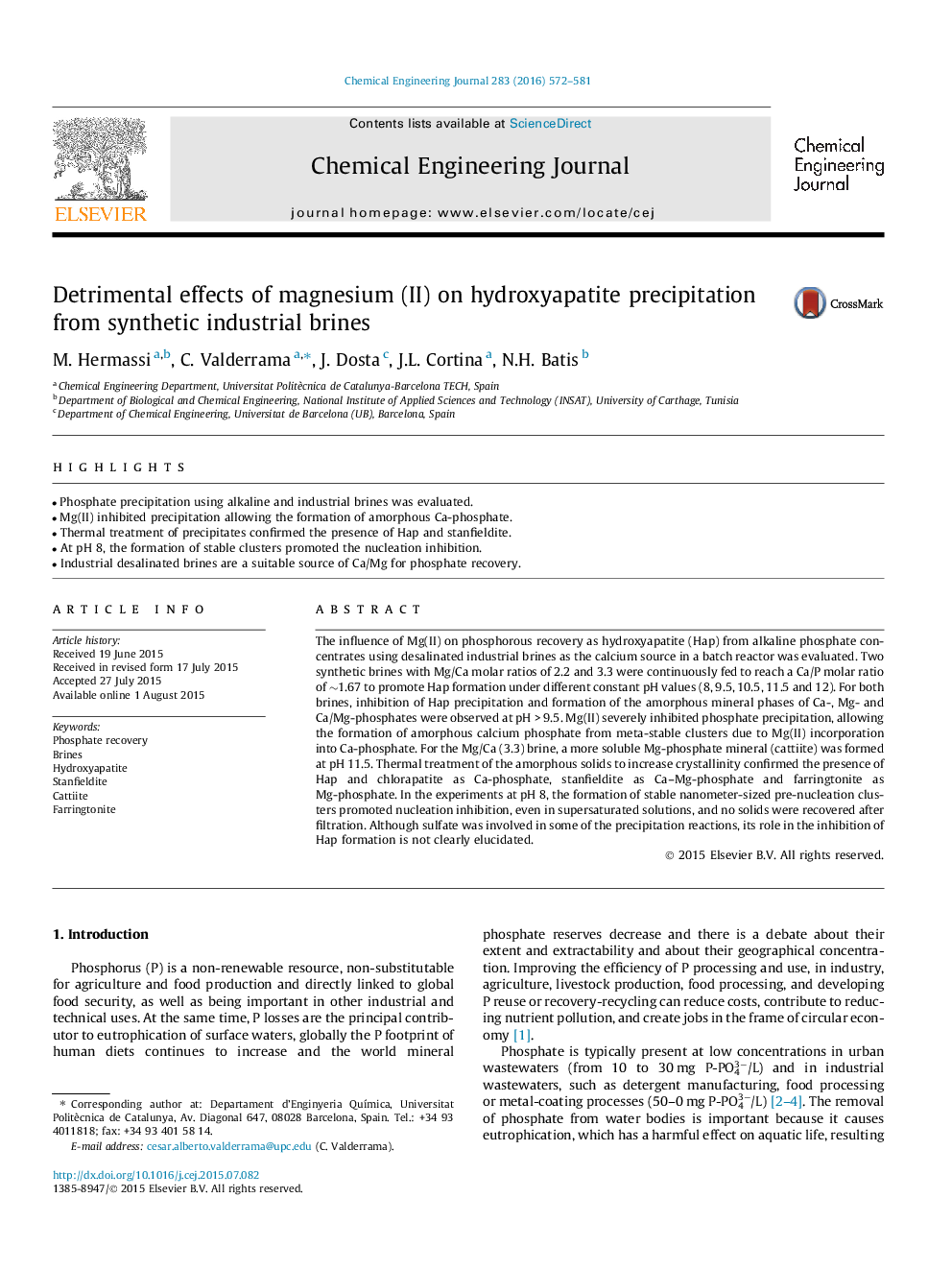| Article ID | Journal | Published Year | Pages | File Type |
|---|---|---|---|---|
| 6583730 | Chemical Engineering Journal | 2016 | 10 Pages |
Abstract
The influence of Mg(II) on phosphorous recovery as hydroxyapatite (Hap) from alkaline phosphate concentrates using desalinated industrial brines as the calcium source in a batch reactor was evaluated. Two synthetic brines with Mg/Ca molar ratios of 2.2 and 3.3 were continuously fed to reach a Ca/P molar ratio of â¼1.67 to promote Hap formation under different constant pH values (8, 9.5, 10.5, 11.5 and 12). For both brines, inhibition of Hap precipitation and formation of the amorphous mineral phases of Ca-, Mg- and Ca/Mg-phosphates were observed at pHÂ >Â 9.5. Mg(II) severely inhibited phosphate precipitation, allowing the formation of amorphous calcium phosphate from meta-stable clusters due to Mg(II) incorporation into Ca-phosphate. For the Mg/Ca (3.3) brine, a more soluble Mg-phosphate mineral (cattiite) was formed at pH 11.5. Thermal treatment of the amorphous solids to increase crystallinity confirmed the presence of Hap and chlorapatite as Ca-phosphate, stanfieldite as Ca-Mg-phosphate and farringtonite as Mg-phosphate. In the experiments at pH 8, the formation of stable nanometer-sized pre-nucleation clusters promoted nucleation inhibition, even in supersaturated solutions, and no solids were recovered after filtration. Although sulfate was involved in some of the precipitation reactions, its role in the inhibition of Hap formation is not clearly elucidated.
Related Topics
Physical Sciences and Engineering
Chemical Engineering
Chemical Engineering (General)
Authors
M. Hermassi, C. Valderrama, J. Dosta, J.L. Cortina, N.H. Batis,
